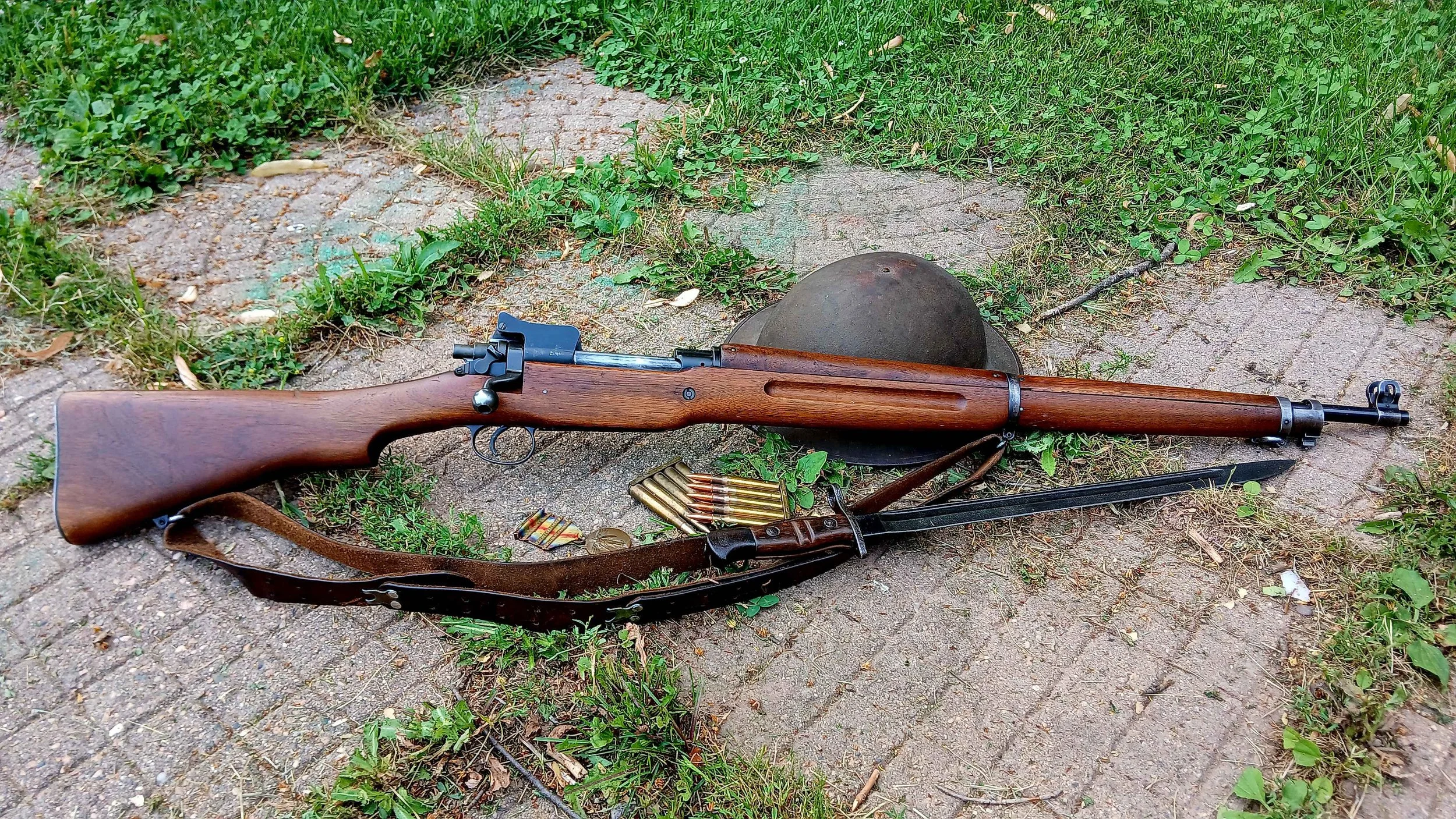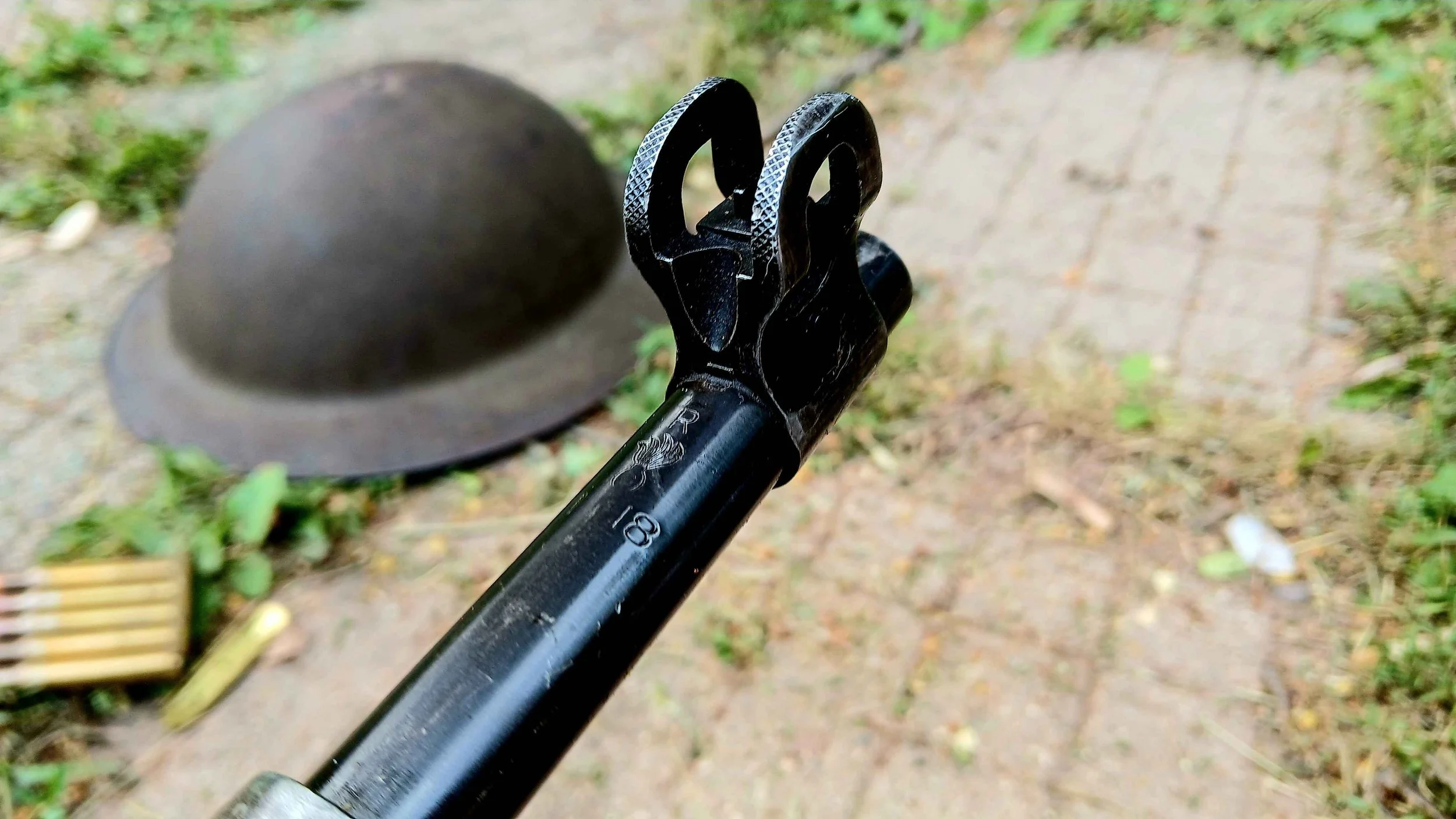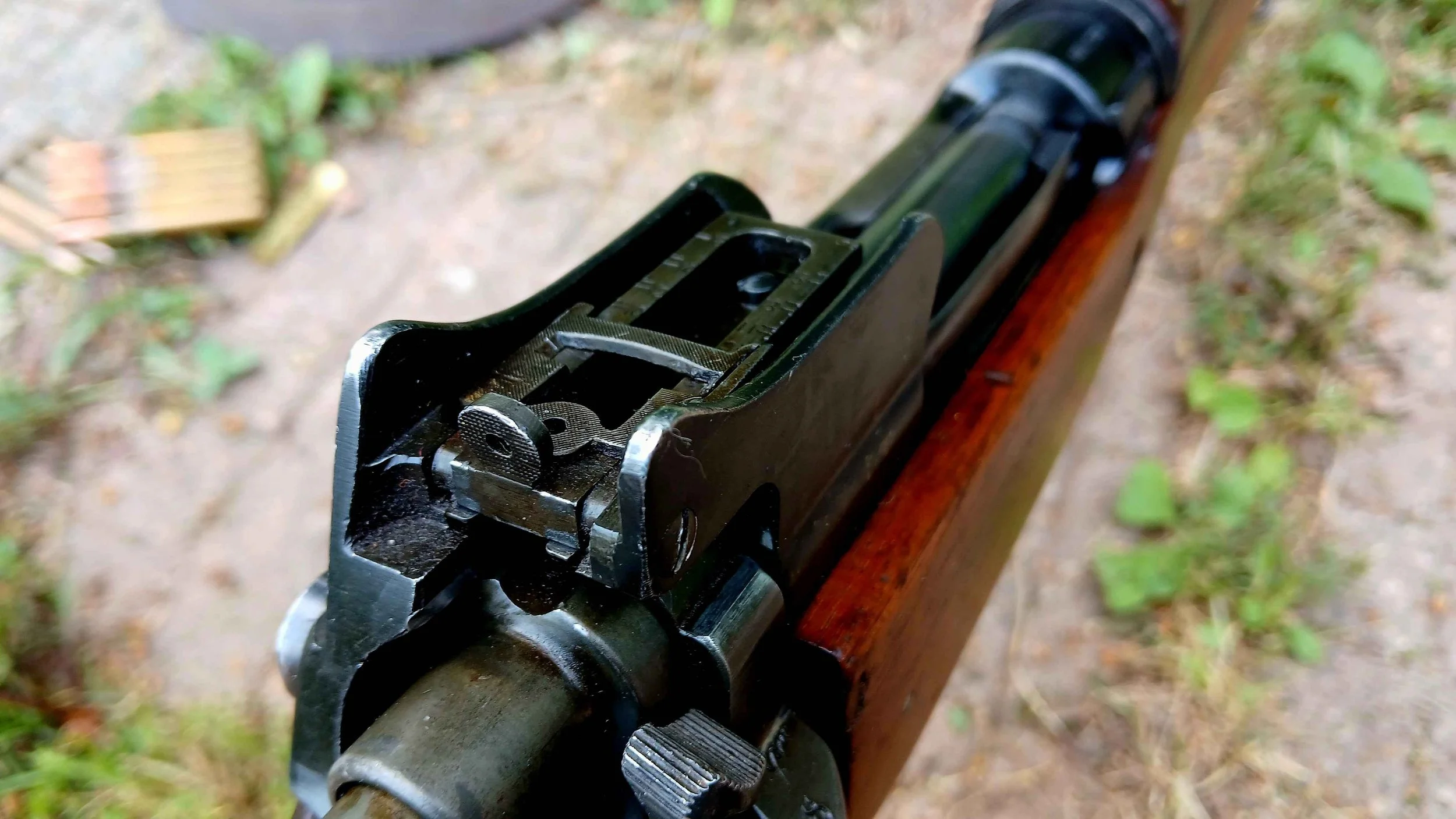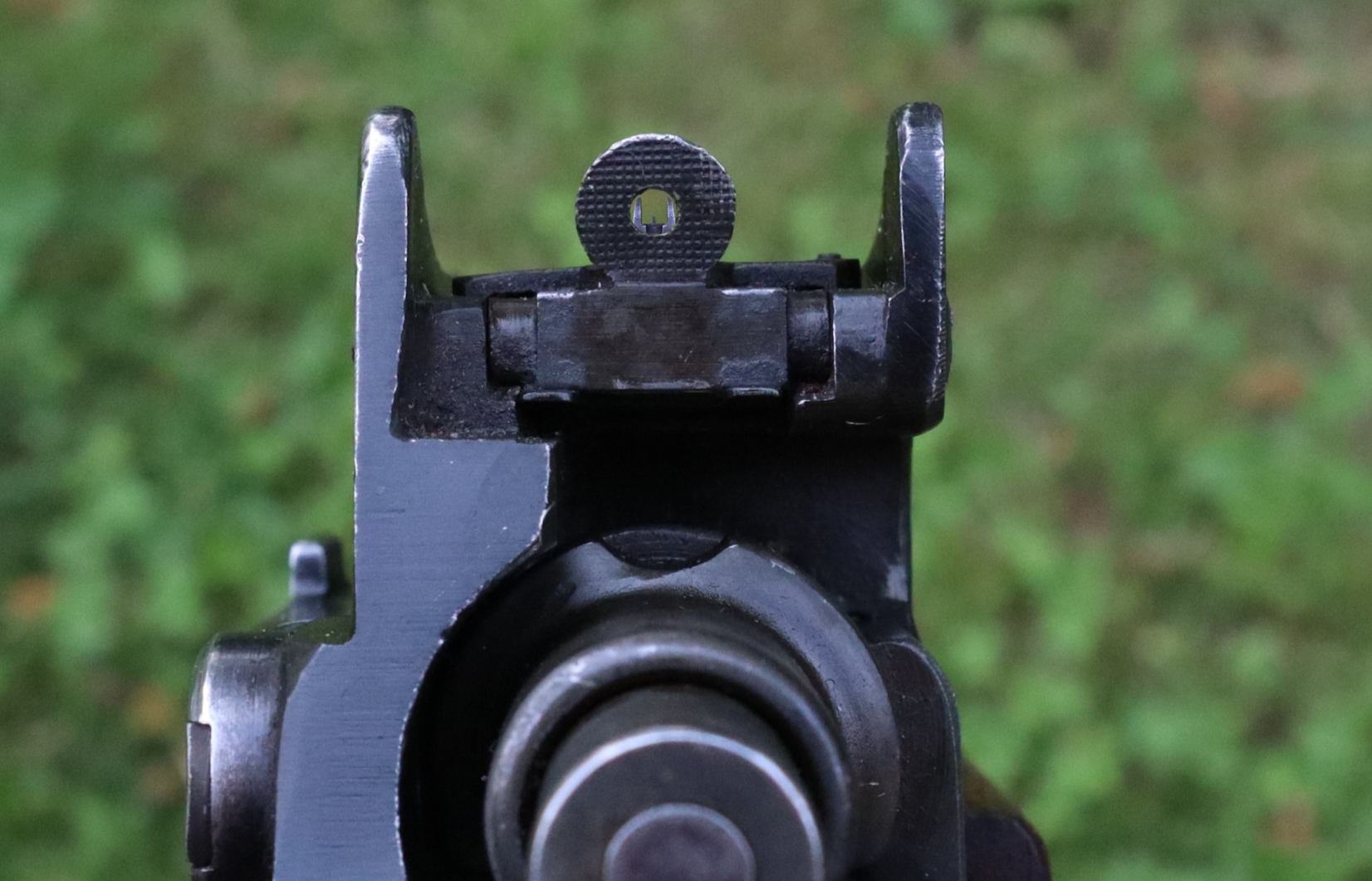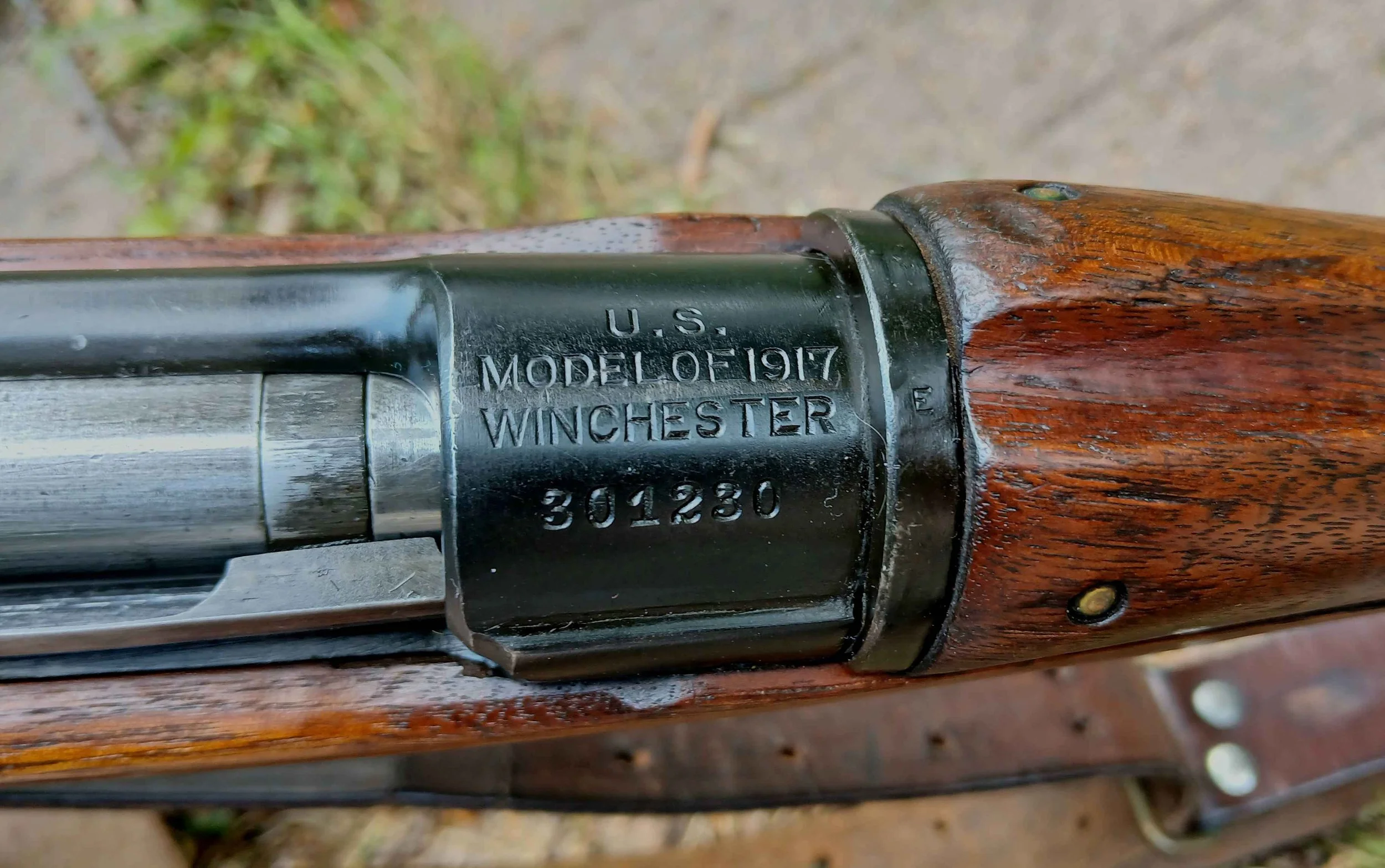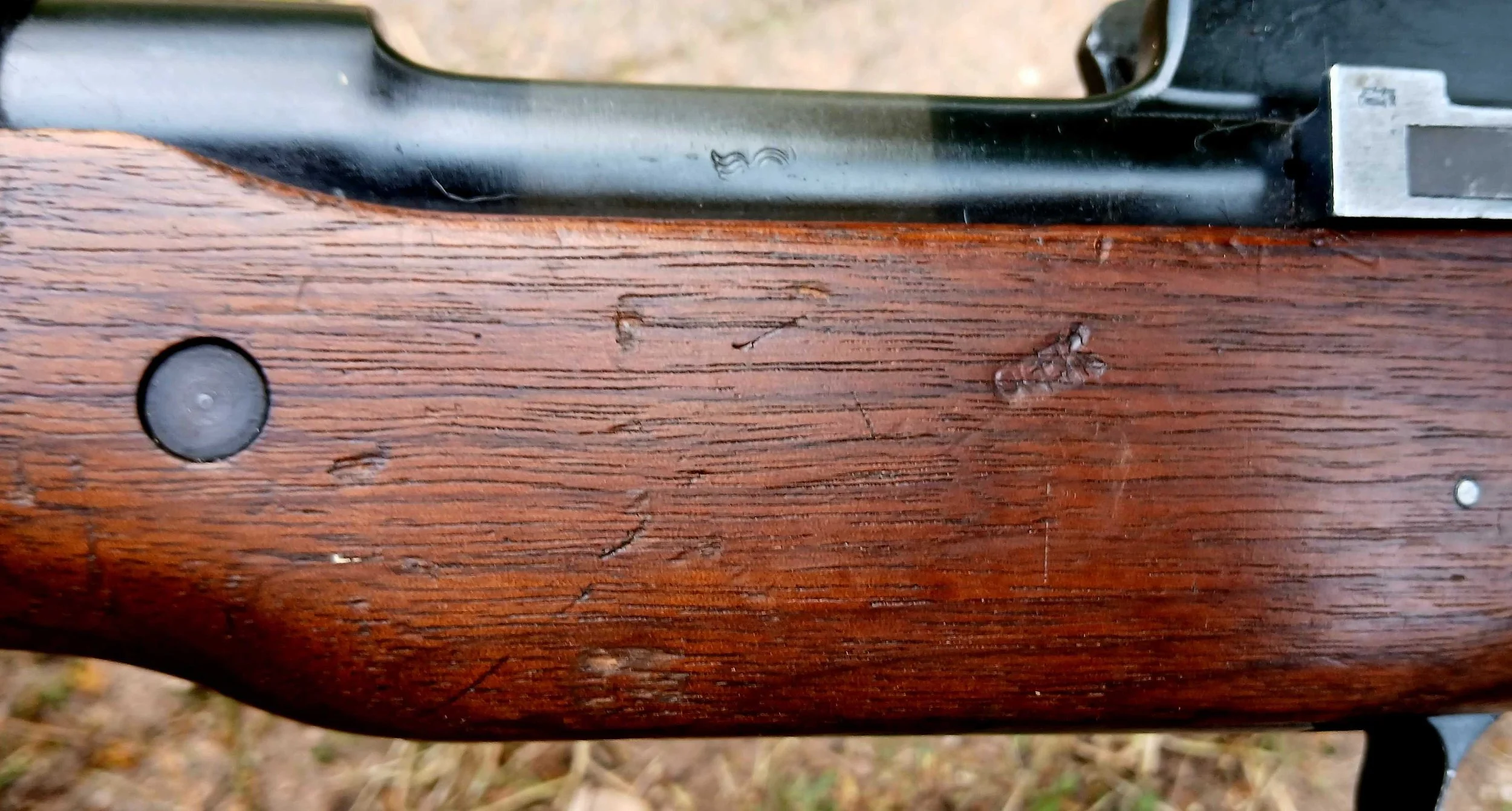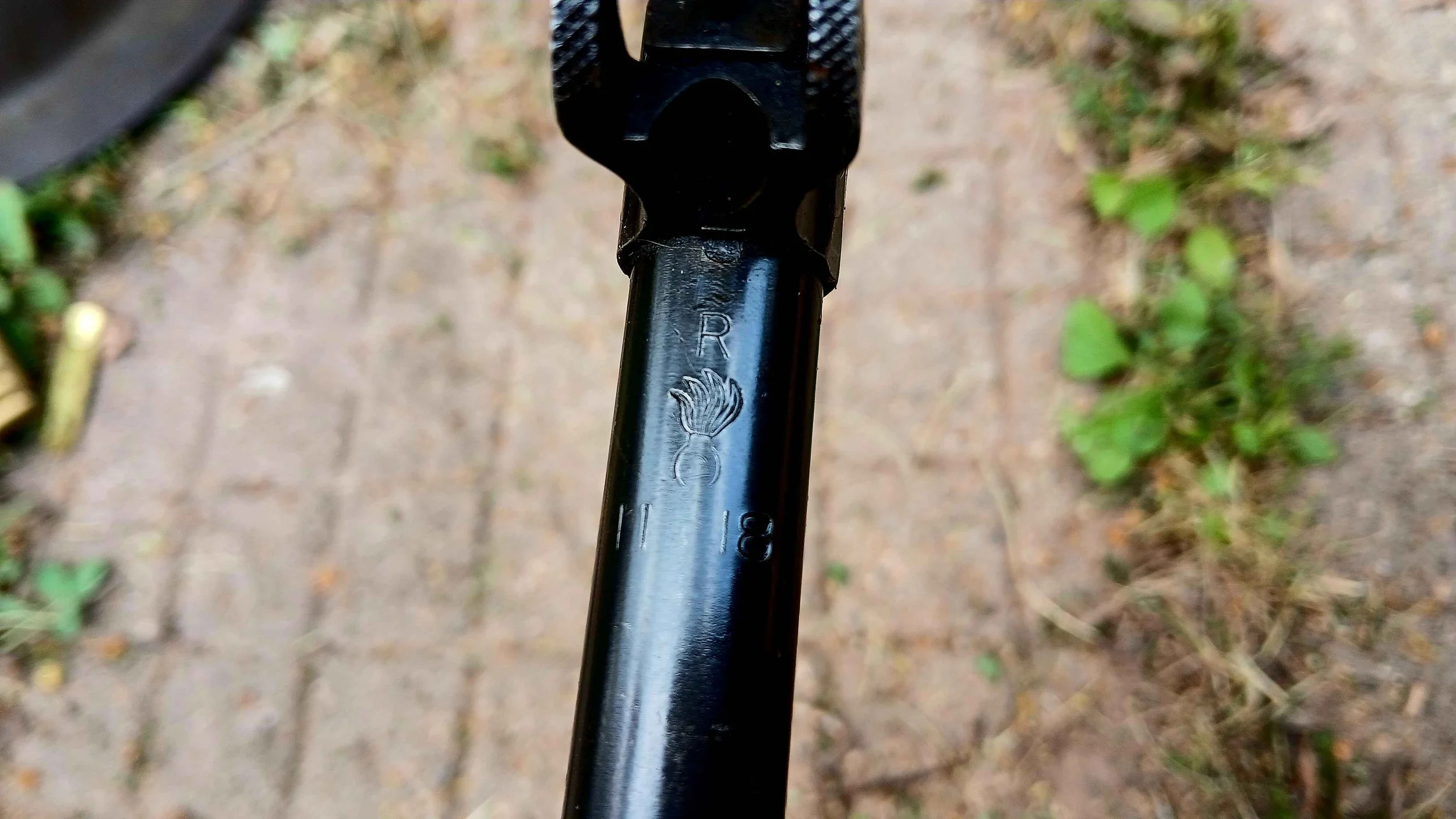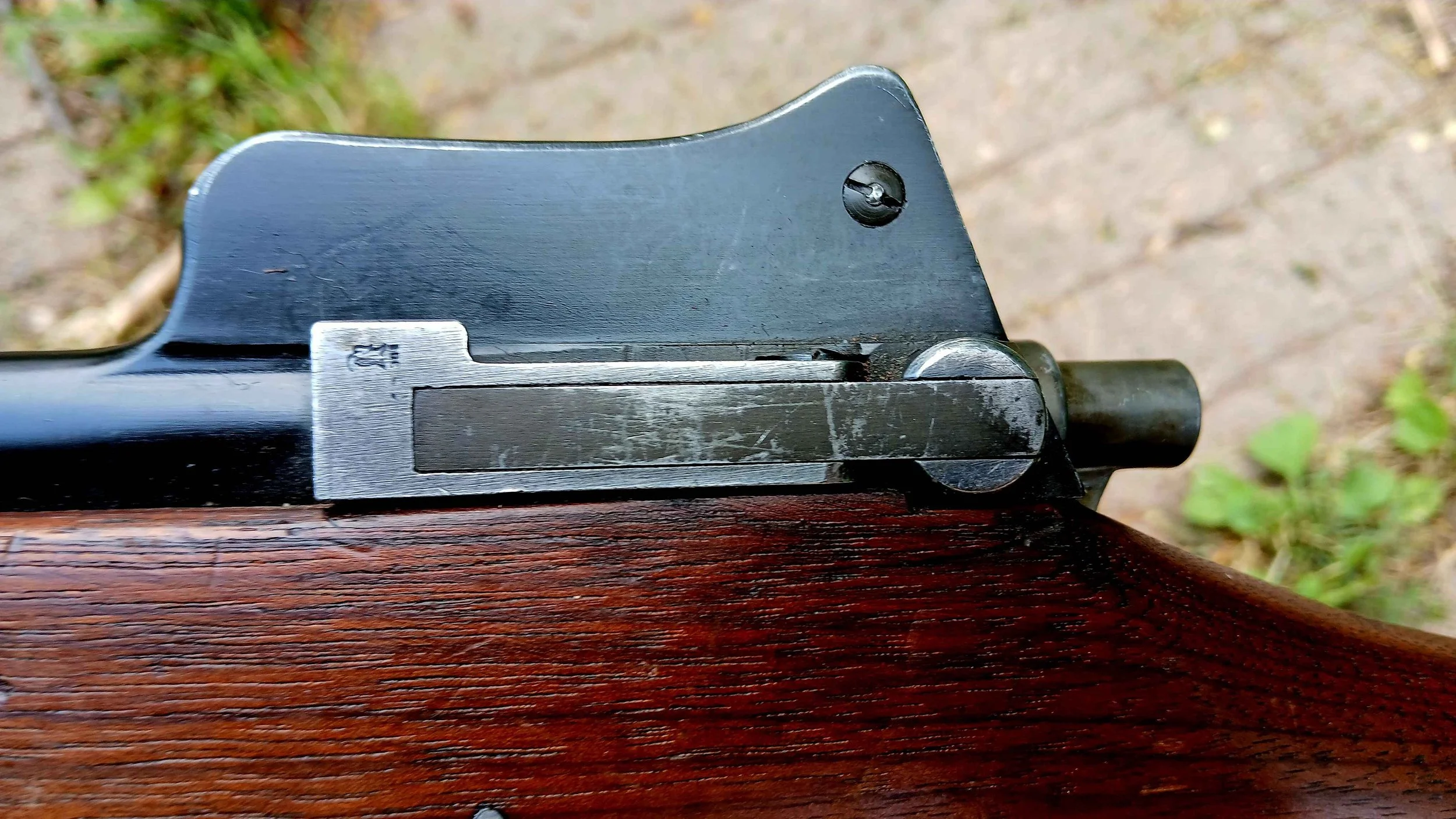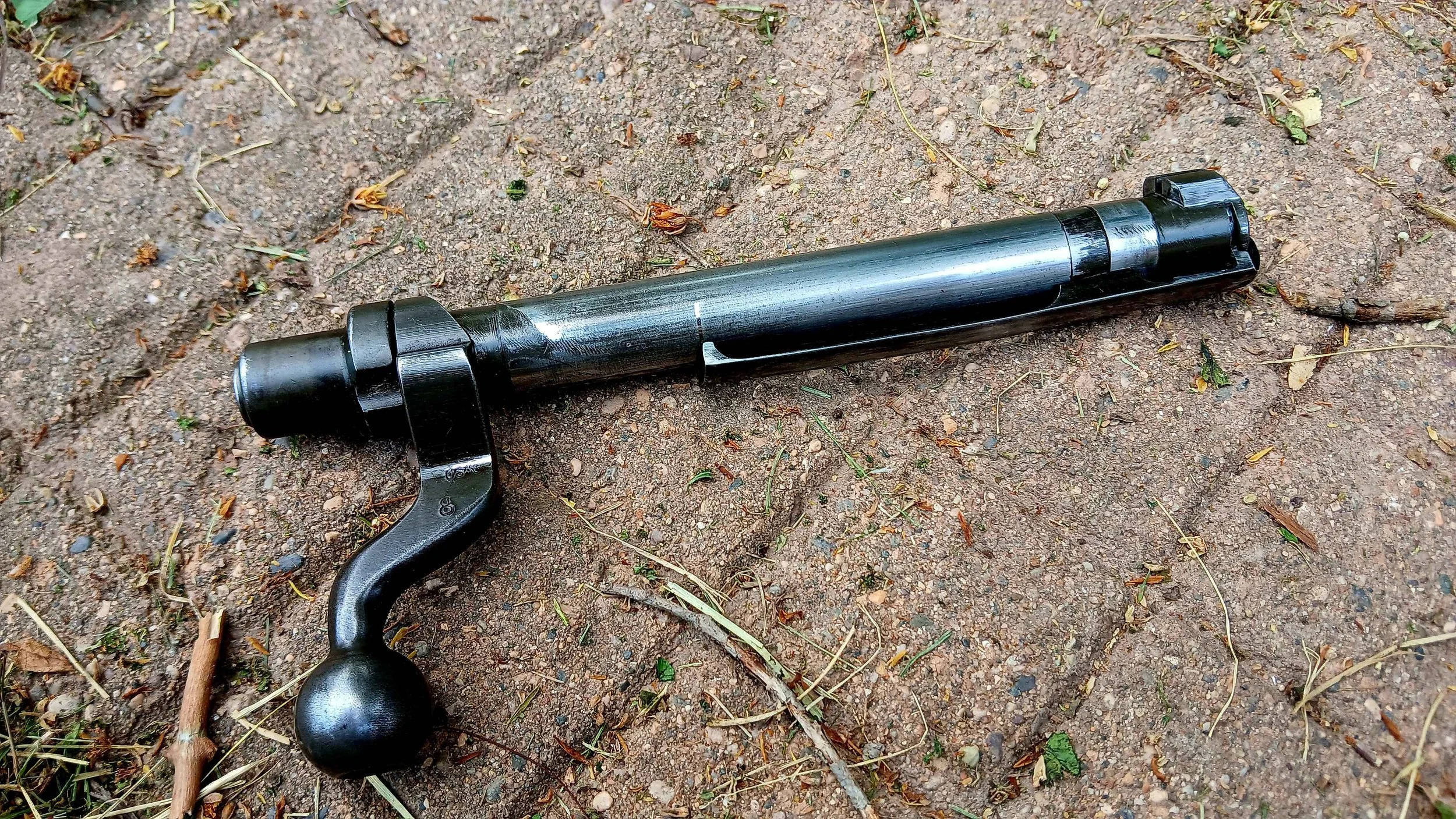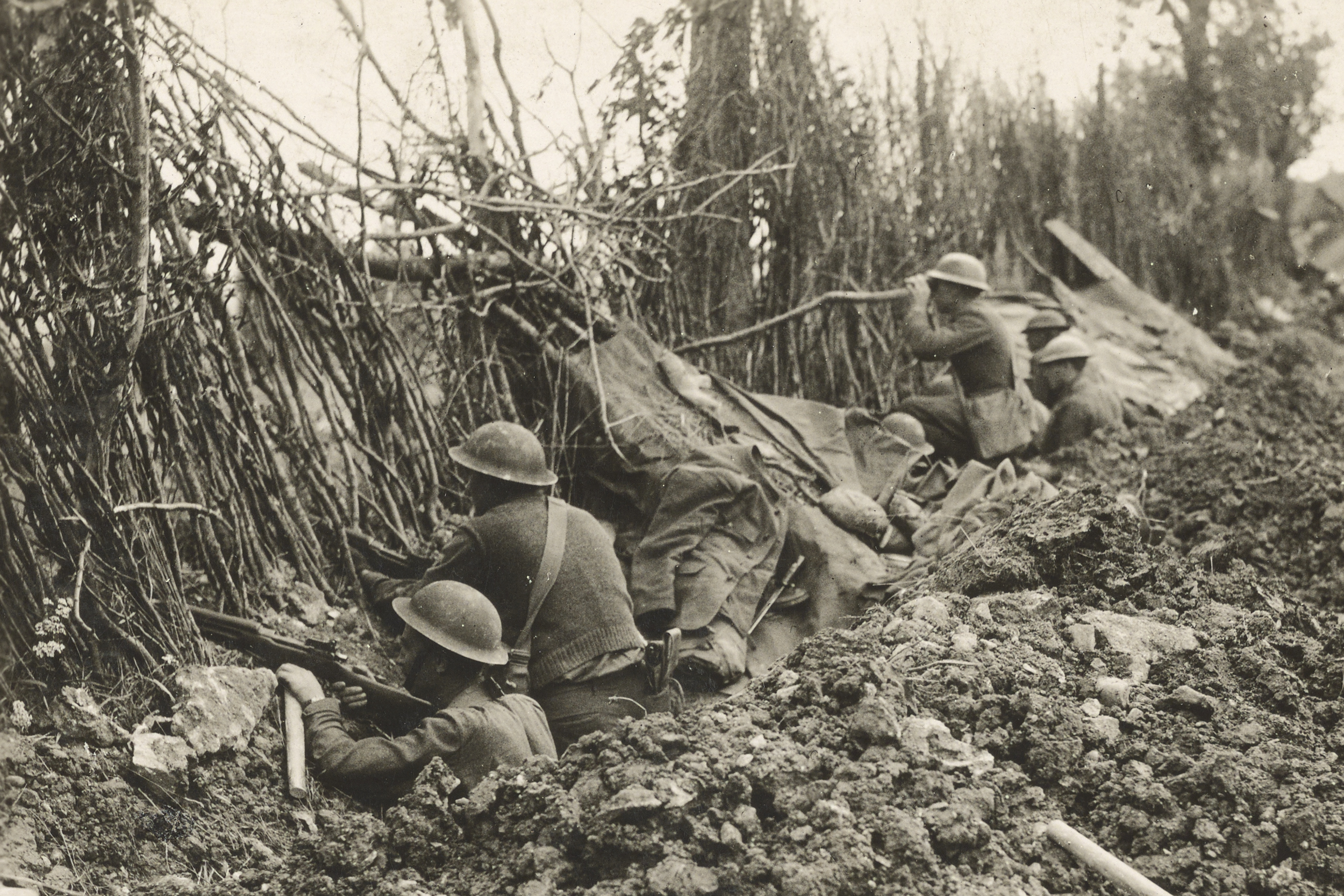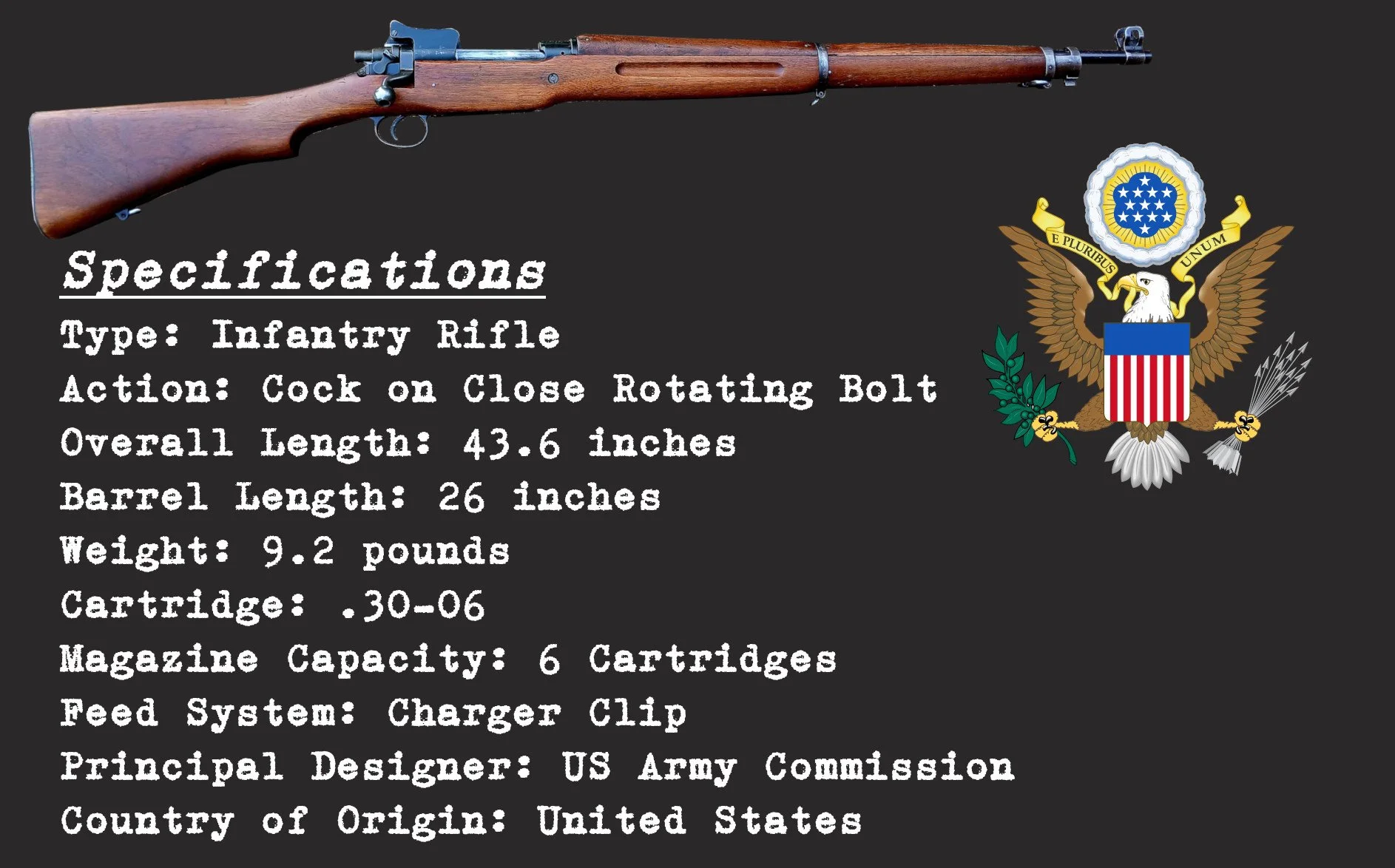M1917 Enfield
When the United States finally entered the Great War in 1917 it found itself facing a significant shortage of modern rifles, and turned to a foreign design already in mass production domestically.
The History
The story of the “American Enfield” can be traced back to the Boer War in South Africa, where the British found their early model Lee Enfield rifles outclassed by the 7mm Mausers used against them. This led to the conclusion that the Lee Enfield and the .303 caliber cartridge were inadequate, and as a result development of a new, Mauser based rife design was initiated alonside a new .276 caliber rimless cartridge. By 1913 the new rifle and cartridge were ready for field trials, but with the opening of the First World War a year later development of the new rifle was shelved.
The front sight of the M1917 is a blade protected by prominent ears
Despite this, the small, professional British Army found itself short of arms as it rapidly expanded, and the new rifle was in part designed with efficient mass production in mind. As a result, when British purchasing agents traveled to the United States to secure a contract for rifles they brought with them the experimental Pattern 13 designs, altered to chamber the standard .303 cartridge. Contracts were signed with the legendary American arms firms Winchester and Remington, with Remington’s affilliate plate at the Baldwin Locomotive Works in Eddystone, Pennsylvania, which began production of what the British designated the P14 rifle. Difficulties with standardizing parts across the manufacturers led to the British using most for second line purposes, especially as production of the standard SMLE MkIII* ramped up to meet demand.
Perhaps the most distinguishing feature and enduring legacy of the design, the rear aperture sight would become standard on all subsequent US martial rifles
When the Americans entered the conflict in 1917 they, like the British before him, found themselves short of their standard M1903 Springfield rifles. With the British contracts wrapping up, it was found that it would be far faster to reconfigure the P14 rifle to American requirements than to retool three major factories to M1903 production, and as a result the M1917 was born. Converted to .30-06 with some other minor alterations, production of the new rifle would far exceed the M1903, leading to this stopgap rifle ending up as the most common rifle in American hands during the Great War.
The aperture rear sight picture of the M1917 Enfield
The M1917 did not enjoy the popularity of the M1903 in the hands of the Doughboys of the AEF, with its increased length and weight being the most commonly cited complaints. In addition, despite the fact that the weapon had arguably become more American than British by the time of its introduction, it still had a stigma of being a “foreign” weapon, as opposed to the domestic Springfield. After the war it was deceided to retain the M1903 as the standard US martial arm, with the M1917 being relegated to a supporting role, with the majority of them being placed into storage.
The receiver of the M1917 bears the model designation, property mark, manufacturer name and serial number
In the interwar period a large quantity of M1917 rifles were sent to equip the new Philippine Army as the islands moved to transition from a US Territory to a sovereign state. These would see use during the defiant but doomed defense of the islands subsequent to the Japanese invasion in 1941, with examples remaining in use with resistance forces as well as Japanese occupation troops after the fall of the Filipino-American defenders.
Stockpiled M1917 rifles would also be sold to the British to arm their Home Guards after the evacuation of Dunkirk in 1940, marked with red paint to differentiate them from the earlier P14 rifles issued to those units. Other would also find their way into the hands of Chinese Nationalist and Free French forces as aid during the conflict. Some would also remain in US service during the war, although mainly with support units as opposed to front line troops. After the end of the Second World War in 1945 the end was in sight for the bolt action infantry rifle, and the M1917 was eliminated from inventory. As of the 21st century, the M1917 remains in service only with the Danish sled dog patrol units operating in northern Greenland, where the reliability of the weapon in the harsh conditions keeps it standardized.
Many M1917s were reworked in the interwar period, including this example, fitted with a new stock and an Ogden Arsenal inspection stamp
The Design
The M1917 is a cock on close bolt action rifle that is at least in part inspired by the Mauser system, mixed with Enfield elements. The bolt has dual opposed front lugs and a Mauser type long claw extractor. Its distinctive “dog leg” bolt handle is designed to deposite the shooter’s hand as close to the trigger as possible when cycling the action, facilitiating rapid fire in keeping with British doctrine.
Just as with the M1903, the barrel of the rifle bears a date of manufacture was well as the US Ordinance flaming bomb stamp
The rifle is fairly long and notably heavy, with its large receiver and heavy barrel, although this does aid in accuracy. The weapon is fed by standard US issue M1903 charger clips, and although the clips hold five cartridges, the magazine can actually comfortably hold six cartridges due to the smaller diameter of the .30-06 case compared to .303 or .276 Enfield.
The M1917 beats US eagle head proofs on many parts, and has a total lack of provision for the P14’s volley sights
This Example
The example in the reference collection was produced by Winchester in 1918, and was refurbished at a later date during the interwar period, although it retains most of its original blued finish. It has been fitted with a 1918 dated Remington barrel, as well as a new bolt assembly manufactured by the United Shoe Manufacturing Company (accordingly marked “USMC”, commonly mistaken for being a US Marine Corps property mark). Overall condition is excellent.
Opinions
The M1917 Enfield is among the author’s favorite bolt action rifles. Its combination of the best features of the Mauser and Enfield systems, combined with the .30-06 cartridge make for a potent package that shoots extremely well. its main drawback is its weight, although it must be said that this does help with recoil management.
American Doughboys man the line in France with their M1917 rifles.
US National Archives
Observed Values and Frequency
Updated: August, 2025
AVERAGE VALUE (USD): $1,250
FREQUENCY: Common
COLLECTOR’S NOTES: Winchester examples command a premium, as do those with blued as opposed to parkerized finish. Prices jumped sharply over the past few years but seem to be decreasing slightly.
